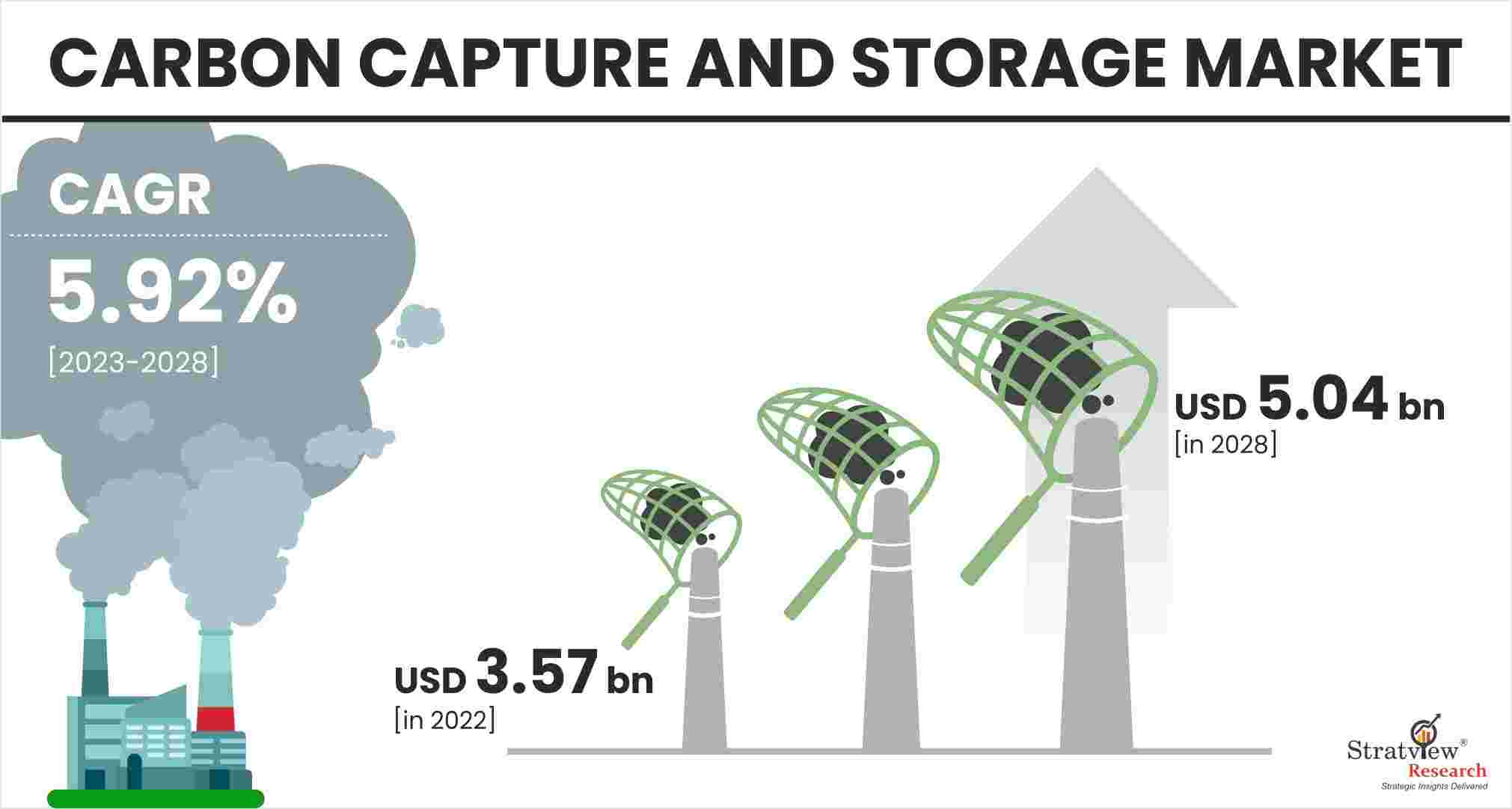Opportunities and Challenges in the Global Carbon Capture and Storage Market

The global carbon capture and storage (CCS) market is poised for growth as the urgency to combat climate change intensifies. carbon capture and storage, a technology that captures carbon dioxide (CO2) emissions from industrial processes and stores them underground, is considered a crucial tool for achieving net-zero emissions. While the market presents significant opportunities, it also faces numerous challenges that must be addressed to ensure its long-term success.
According to Stratview Research, the carbon capture and storage market was estimated at USD 3.57 billion in 2022 and is likely to grow at a CAGR of 5.92% during 2023-2028 to reach USD 5.04 billion in 2028.
Opportunities in the Carbon Capture and Storage Market
1. Decarbonizing Heavy Industries
One of the most promising opportunities for the carbon capture and storage market lies in its ability to decarbonize industries that are notoriously difficult to reduce emissions from, such as cement, steel, and chemicals. These industries account for a significant portion of global CO2 emissions, and carbon capture and storage offers a viable solution for capturing emissions that cannot be eliminated through other means. By helping these sectors reduce their carbon footprint, carbon capture and storage can play a vital role in the broader effort to mitigate climate change.
2. Growing Policy and Regulatory Support
Governments worldwide are increasingly prioritizing climate action, and many have introduced policies and incentives to support the deployment of carbon capture and storage technology. In the United States, the expansion of the 45Q tax credit under the Inflation Reduction Act provides financial incentives for capturing and storing CO2. Similarly, the European Union's Green Deal emphasizes the importance of carbon capture and storage in achieving climate neutrality by 2050. These policy frameworks create a favorable environment for carbon capture and storage investments and project development, helping to drive market growth.
3. Expanding Carbon Utilization
Beyond simply storing captured CO2, there is a growing focus on carbon utilization, which involves converting CO2 into valuable products such as synthetic fuels, chemicals, and building materials. This approach, known as carbon capture, utilization, and storage (CCUS), presents new commercial opportunities. By transforming CO2 from waste into resources, companies can create additional revenue streams while contributing to emissions reduction efforts.
Challenges Facing the Carbon Capture and Storage Market
1. High Costs
One of the most significant challenges in the carbon capture and storage market is the high cost of implementing the technology. The process of capturing, transporting, and storing CO2 requires substantial investments in infrastructure, making it financially burdensome for many companies. Although government incentives and technological advancements are helping to reduce costs, carbon capture and storage remains more expensive than other emissions reduction strategies, which may limit its widespread adoption.
2. Technical and Logistical Complexities
The technical and logistical complexities of carbon capture and storage present another challenge. Capturing CO2 efficiently, transporting it safely over long distances, and ensuring secure storage in underground reservoirs require sophisticated technologies and infrastructure. Additionally, verifying the long-term stability of stored CO2 is critical to avoid potential environmental risks. These challenges demand continued innovation and expertise to ensure carbon capture and storage systems are reliable and effective.
3. Public Perception and Acceptance
Public perception and acceptance of carbon capture and storage can also pose hurdles to its deployment. Concerns about the safety of CO2 storage, potential environmental impacts, and the idea of continuing reliance on fossil fuels have led to skepticism about the technology. Building public trust through transparent communication, education, and demonstrating the benefits of carbon capture and storage will be essential to overcoming these challenges.
Conclusion
The global carbon capture and storage market holds significant opportunities, particularly in decarbonizing heavy industries and capitalizing on policy support and carbon utilization. However, the market must overcome challenges related to high costs, technical complexities, and public perception to reach its full potential. With continued innovation, collaboration, and investment, carbon capture and storage has the potential to become a cornerstone of global climate action and contribute meaningfully to achieving a sustainable future.
- Whats New
- Shopping
- Wellness
- Sports
- Theater
- Religion
- Party
- Networking
- Music
- Literature
- Art
- Health
- Jocuri
- Food
- Drinks
- Fitness
- Gardening
- Dance
- Causes
- Film
- Crafts
- Other/General
- Cricket
- Grooming
- Technology

